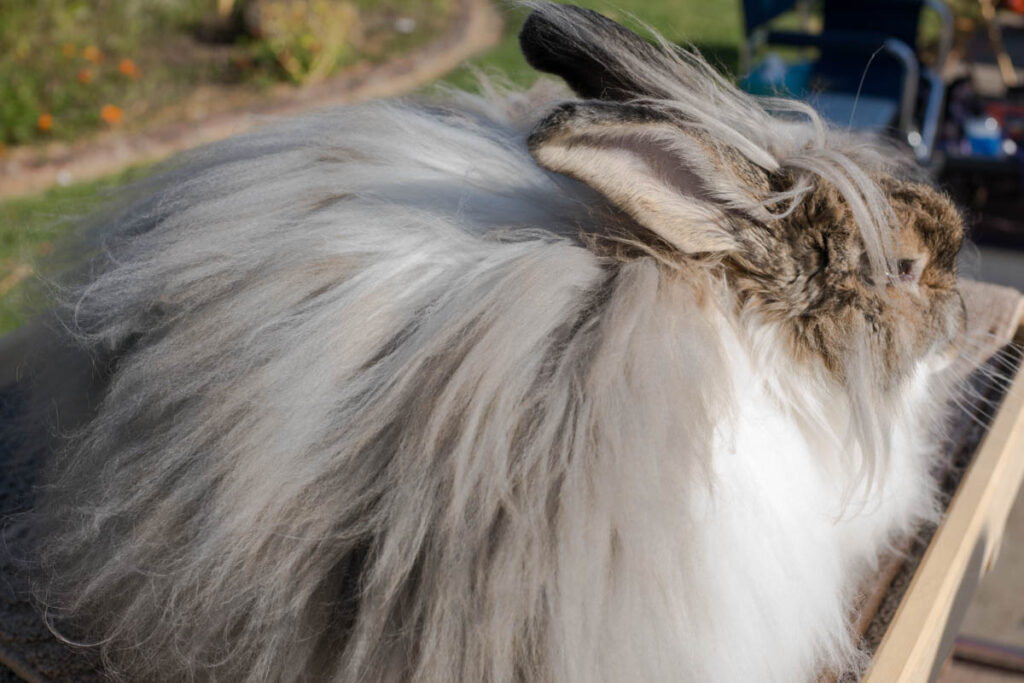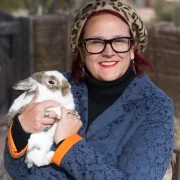Rabbits, unlike most mammals, rarely vocalize. As animals of prey, silence is to their evolutionary advantage. Those who keep rabbits as companions can accompany their pets through their entire lives without ever hearing their voices.
It’s only in moments of duress, such as extreme fear or pain, that rabbits scream. It’s a jarring, gut-wrenching noise.
A recent undercover video shot by PETA Asia in nine different Chinese angora fur farms is shot through with the sound. In it, rabbits are pictured stretched out and tied to boards, with workers yanking their hair out by the fistful, all the way down to the root. The animals, typically so reticent, shriek in agony.
After being stripped bald, the rabbits are tossed, bleeding, back into their solitary cages. There they remain until they’re pulled out again, two months later, to experience the violence all over again, until they can no longer produce quality fur, at which time they are slaughtered. This is how they live their short lives1.
Most animal lovers swore off fur years ago. We’ve read the literature and seen the videos, and most people know by now that there is no such thing as “humane” fur.
We know far less about the conditions that typify the production of angora. We know that it is soft, and lovely, and unlike fur, inexpensive. [It’s] on many of our shopping lists.
Ninety percent of all angora products available in the United States are made in China, where 50 million long-haired angora rabbits produce the fur for this large and profitable industry2 3. Rabbits in China are raised in factory-like conditions, and subjected to the kind of cruelty we tend to associate with the pelting of minks and foxes.
Since the PETA Asia video has gone viral, animal advocates have been calling for a boycott of Chinese-sourced angora products. It may be Chinese nationals who directly perpetrate this cruel practice, but they do so only at the behest of Western designers and retailers, who in turn answer to customers, especially here in the U.S. As with so many other goods, at the end of the long chain of industrial production stands the American consumer. The responsibility for the suffering of these meek animals is ultimately ours — as is the power to end it.
There are alternatives. If someone on your gift list simply must have that angora scarf or sweater, there are small scale and humane angora producers who do not pull the fur by the root from the rabbits’ bodies, but instead simply pluck away the hair that is already molting and is ready to come off. This kind of plucking does not hurt the rabbit, yielding an angora product that is truly cruelty-free.
The vast majority of all angora sold in the United States, however, is produced in China, and is made by causing incredible pain to rabbits.
As the [past} President of House Rabbit Society, an international rabbit advocacy organization, I have lived with rabbits for 35 years. I know what it looks like when a rabbit is happy, and I know what it looks like when a rabbit is suffering—but it doesn’t take an expert to recognize how much pain rabbits endure as their fur is pulled out at the root.
Unfortunately, because rabbits usually are so silent, it is easy for most people to fail to recognize their suffering. For this reason, people of conscience must be their voice, especially during this holiday season, when store shelves are stocked with the products of their pain.
written with the assistance of Leighton Woodhouse.
References
- JEANNINE STEIN, Los Angeles Times. Rabbit Tale Isn’t All Warm and Fuzzy. August 2nd, 2022. Retrieved 3/17/2024 ↩︎
- Leo Benedictus, The Guardian. Can Angora Fur Production Ever Be Ethical? December 16th, 2013. Retrieved 3/17/2024. ↩︎
- PETA. The Angora Industry. Retrieved 3/17/2024. ↩︎

